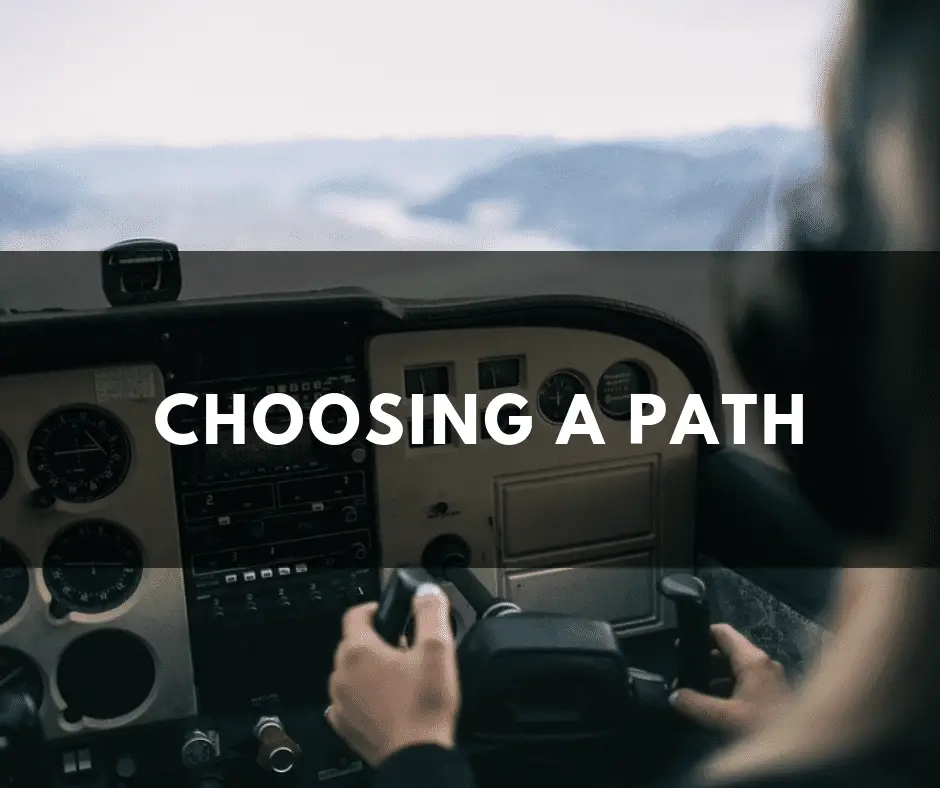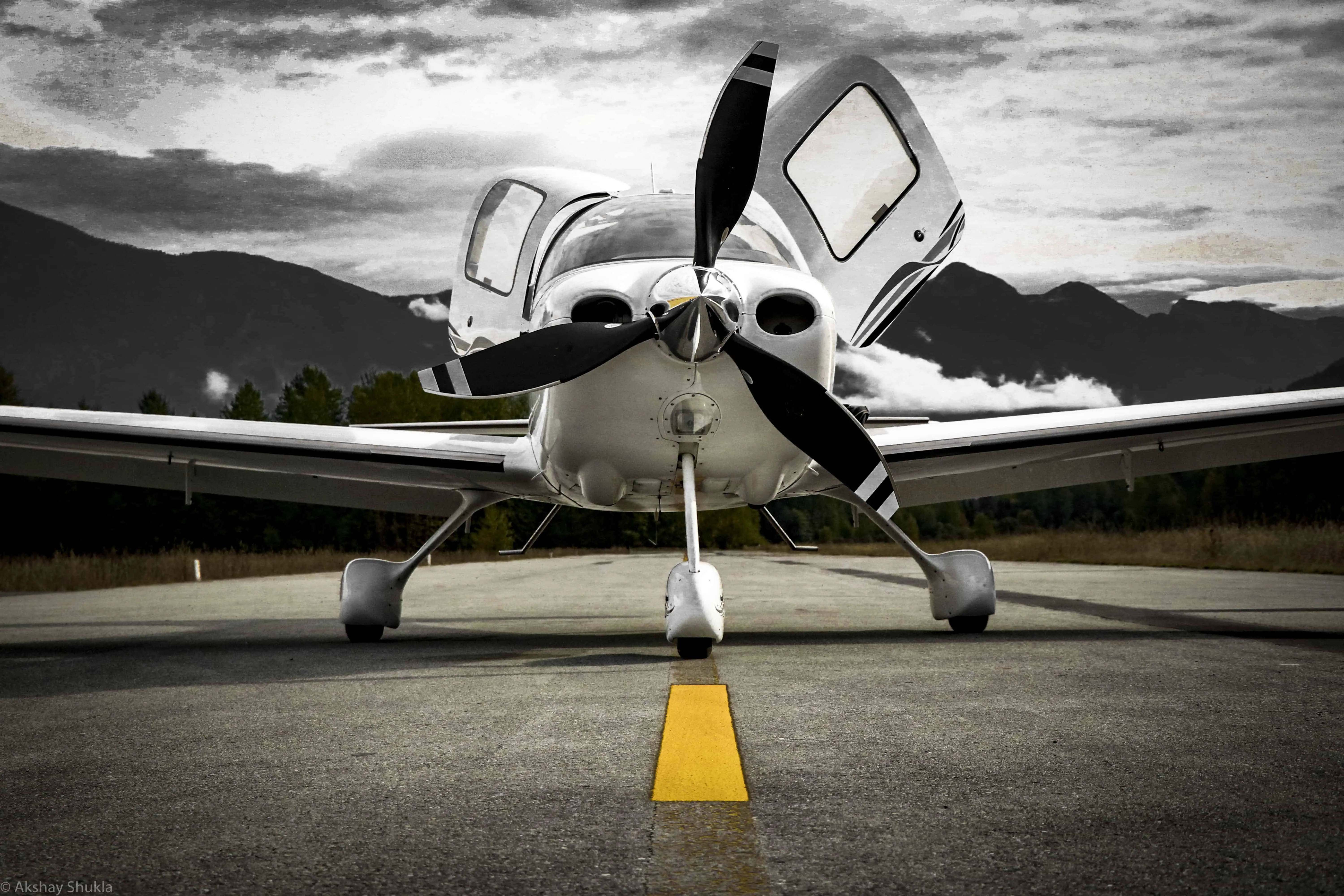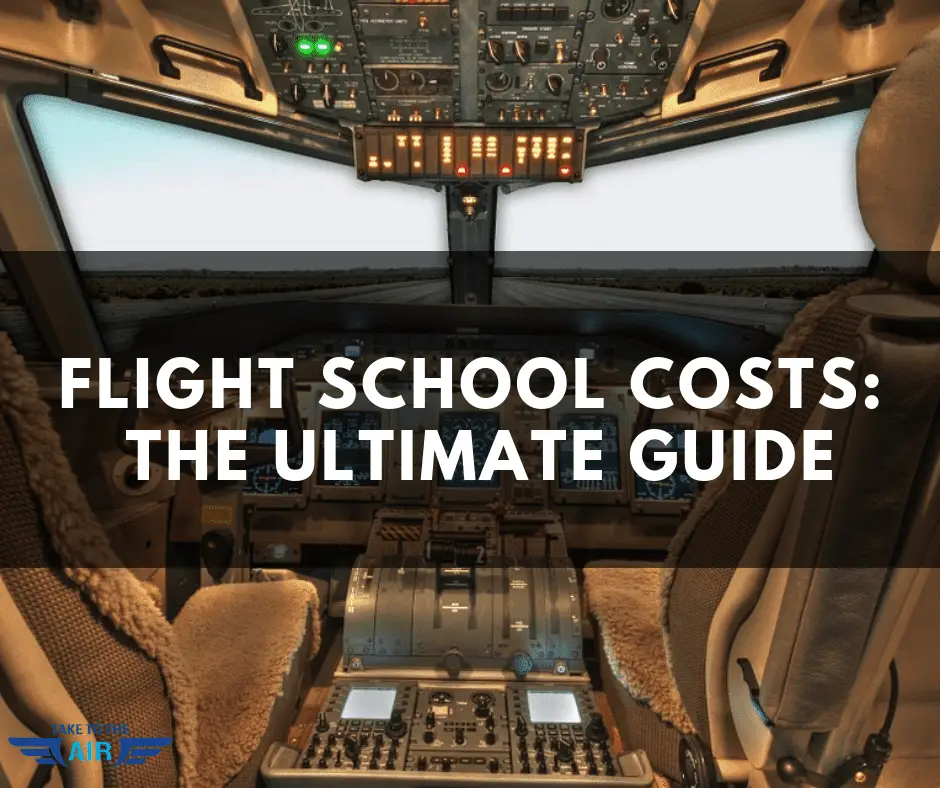Table of Contents
*This post may contain affiliate links. As an Amazon Associate we earn from qualifying purchases.
Flight school is perhaps the only way for aspiring pilots to get licensed and enter the skies. However, depending upon your goals as a pilot and what license you need, the costs can range dramatically. For all types of pilots, here is the ultimate guide for flight school cost.
Flight School Costs: The Ultimate Guide
So you want to be a pilot?
It’s a trade that few people pursue and far fewer make it out of, and that’s for a very good reason. At least in the United States, the rules and regulations surrounding flight are incredibly strict. Pilots are expected to know just about everything there is to know about flying, plane control, maintenance, and even first aid.
It’s a lot to ask of someone, and of course, it will involve taking many, many, hours of training at a flight school. Flight schools are not cheap, and there are many various costs associated with attending a flight school as well as receiving your license to fly.
Think you have what it takes? We’ve put together the ultimate guide of everything you need to know about flight school cost, career paths, and hours. While we’ll be focusing in on the costs of flight schools, we’ll also be breaking down how your path will affect your bottom line as well as the number of hours you’ll need to grind on the ground before you can soar in the skies.
Choosing A Path

One of the most important financial and personal decisions to make when it comes to your career path as a pilot is often the first decision to make: what type of pilot do you want to be?
Pilots are not one-size-fits-all. Just because you have a pilot’s license does not mean you can fly commercial planes as easily as you can your weekend plane. Likewise, commercial pilots can’t fly every type of plane as well.
To break it down more simply, there are two major routes you can take to earn your pilot’s license—you can choose to go private and obtain the license that will legalize your joyrides and weekend getaways, or you can opt for a commercial license to fly others in airports throughout the country and possibly the world.
These are, respectively, a Private Pilot License (PPL) or a Commercial Pilot License (CPL). Both come with different associated costs. Generally, however, it is safe to assume that you’ll save money going the private route rather than the commercial route. There is also a Sport Pilot License (SPL), which is more affordable, but severely limits your ability to fly.
Of course, it is possible to obtain more than one license and be fully equipped to fly passengers as well as yourself. Still, you need to pick a focus.
Think long and hard about the pathway you want to take—as it will have an impact on the flight school you choose, the certifications you’ll need and the amount of time between this moment and the moment you clear the runway.
Flight School
Now that you’ve made your choice, it’s time to talk about flight school.
As of now, flight school is the only way to get in your hours as one of the requirements of both the PPL and the CPL. And you’re going to need to pick out a flight school that offers everything you’ll need to get your PPL or CPL. You’ll also need to pick up an FAA medical license in many cases, but we’ll get more into this in a minute.
Location and cost are going to be something to consider, but also be sure to vet out the following information about a flight school before signing on the dotted line:
- What type of school they are (Part 61 or Part 141)
- How flight time is scheduled
- If you and the instructors are a good fit
- Insurance policies
While some of these are a bit self-explanatory, you’ll generally want to visit the flight school before agreeing to the cost. One of the costs associated with flight school is the number of hours in the air, and for this reason, you need to consider which type of flight school your prospective choice is: either Part 61 or Part 141.
Taking their names from federal aviation regulations (FARs), these places can both hand out licenses but need to meet different requirements. There’s a lot of differences between them on the paperwork side of things, but the only thing you need to know is that Part 141 schools generally require more hours in the sky than Part 61 schools.
At the same time, Part 141 schools are more regulated and therefore may be more up to snuff when it comes to teaching you how to command the skies.
In any case, once you’ve made your choice of vocation and chosen the flight school that’s right for you, it is time to pay up for some lessons.
Take Lessons
Here’s where the pricing gets interesting.
Flight schools charge for many different things, including exam fees, instructional fees, but perhaps most importantly, flight time.
Unless you’ve entered this venture in your life incredibly wealthy, you’ll probably need a plane to fly. No matter what, if you get the PPL, SPL, or the CPL, you need time in the sky, and you’ll need a plane to get you there.
Most planes are rented out by the flight schools themselves, and once you get a preliminary student license to fly, you can put forth the money to get yourself into the sky.
So how much does it cost? Well, let’s break it down into segments:
Your exams will cost around a few hundred dollars depending upon the organization. These exams are to prove to the flight school that you’re able to fly the plane as well as prepare you for the task of receiving your license itself.

Next comes the cost of the plane itself, which is going to be one of the biggest costs. Plane owners take on considerable risk both in property as well as in possible legal fees when allowing unlicensed pilots to man their planes. Which is why plane fees can range from a hundred dollars or more an hour.
Finally, the last major cost will be the cost of the interaction you’re getting at your flight school of choice. These costs will vary greatly, but about $50 an hour is a fair estimate.
This is where the license you’ve picked out becomes vital. Private pilots average around 70 hours of paid time between staring up school and getting their license. For commercial pilots, that number can go well beyond 200.
In either case, your chosen flight school will give you the tools you need to meet many of the requirements for your license of choice. Once you’ve put in the time, studied hard, and passed all of your tests, it’s time to walk across the stage and pick up your license.
Get Licensed
Like we’ve mentioned before, there are two major licenses you can get—the Private Pilot License and the Commercial Pilot License. However, for both, and with a few exceptions, you’ll also need an FAA medical license.
These licenses are handled by federal offices, so in many cases, you’ll need to get this license separately from your flight school. You also don’t need to complete flight school to get your FAA medical paperwork sorted out, so if you need to, you can pick this license up before getting to flight school.
Once the medical work is out of the way, you’ll get your license once you’ve met all of the requirements of your flight school. But how much does that cost?
We’ve given you the general hourly costs of flight in the sky, and if you find a cheaper school, the average costs are as follows:
If you’ve gone for a simple license, anywhere from $5,000 to $10,000 can be expected. This covers a basic PPL and gives you the ability to fly a plane for yourself or for friends and family. Bear in mind that you can never be compensated for flying, and you risk losing your license if you do so. You also need to ensure your paperwork and licenses are up to date at all times.
For SPL’s, the cost is roughly half, but you will be limited to small planes, in clear skies in the daytime, and never for profit.
For a Commercial License that may or may not include a Private License, expect that number to increase dramatically to $20,000 or more. However, we also need to clarify that this doesn’t allow you to fly for Delta, American Airlines, or any other big operations.
You’ll also need to get an Instrument Rating, which may or may not be included with your flight school’s program. The number we’ve given here for a CPL reflects an instrument rating as well.
If you choose to stop your training here, you can expect to fly others in smaller, chartered flights or regional trips around your neck of the woods. But if you want to go above and beyond, your training has just begun.
Above And Beyond: Commercial Pilots
On top of the Private License, Instrument Rating, and Commercial License, there’s more work to be done if you want to fly many people for a major airline.
The most commonly cited rule for flying for a major airline is the 1500 hour rule, which comes straight from the FAA. To be a first officer for a major airline, you need to log 1500 hours of flight.
1500 hours is a far cry from the 200 hours or so that you initially needed to pass through flight school. And while the costs associated with becoming a commercial pilot for a major airline may or may not include the flight school cost, it is worth covering for the many who seek out this career path.
In fact—you may need to return to flight school for their help in this matter.
Many flight schools across the country know of the 1500 hour rules, and wish to hire their alumni right after receiving their certification to train new students. This allows prospective major airline pilots to log in hundreds of hours as they help to train new students.
Prospective major airline pilots can also take full advantage of their CPL and find a job that allows them to make money, pay off any debts accrued from flight school, and prep them for major airline work.
However, once you’ve logged your hours and submitted your resume to your favorite companies, you may need to return to flight school yet again.
The FAA constantly updates their requirements for pilots to maintain top safety standard for all pilots operating in and around US airspace. That means that many major airlines have their individual training, flight school, and certification requirements for their employees.
Depending upon the aircraft you’ll be commissioned to fly, you may need to pay extra fees to train on these aircraft and learn what you need to from your employer to be entrusted with one of their own aircrafts.
Luckily, this final step is often free—as flight school training from a prospective or current employer is often covered by the employer as an incentive to keep their pilots on their payroll, and away from other companies.
Final Thoughts
Whether you sought out your license for small-time private flying or traveled all the way up the ranks to the first officer of a 747, we hope that we’ve given you a better understanding of where the money needs to end up for you to get your license and start flying.
Remember that—much like with students in college—loans are available. And since pilots traditionally make a fair-to-great salary (particularly those who work for major airlines), you may be able to live conservatively and pay back your flight school cost and debt in a few years or less.
Remember to always thoroughly vet out your flight school and talk to alumni if possible before committing. Costs will certainly vary, but a good instructor can turn flight school from another box to check off to a once-in-a-lifetime experience for everyone involved.

